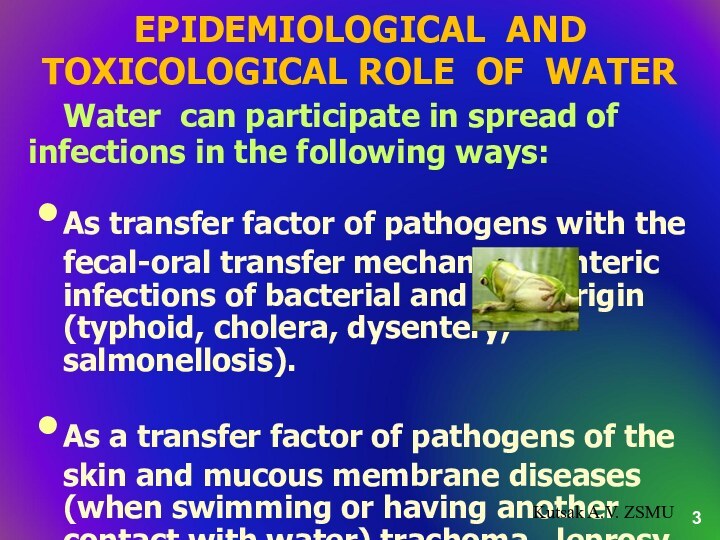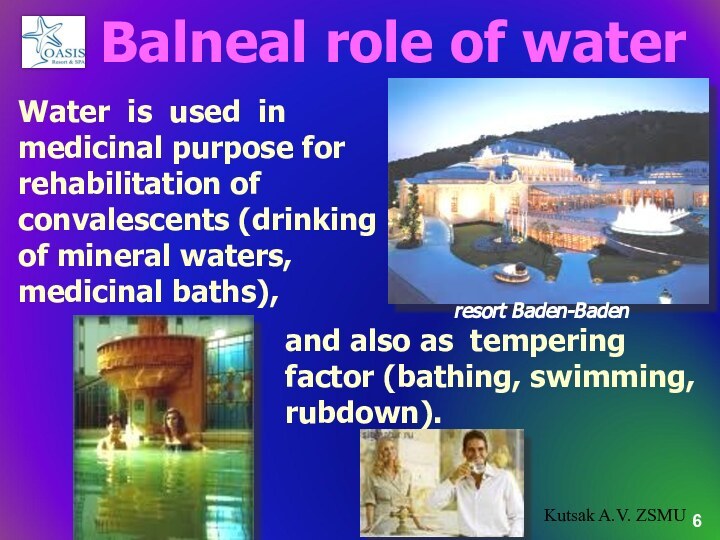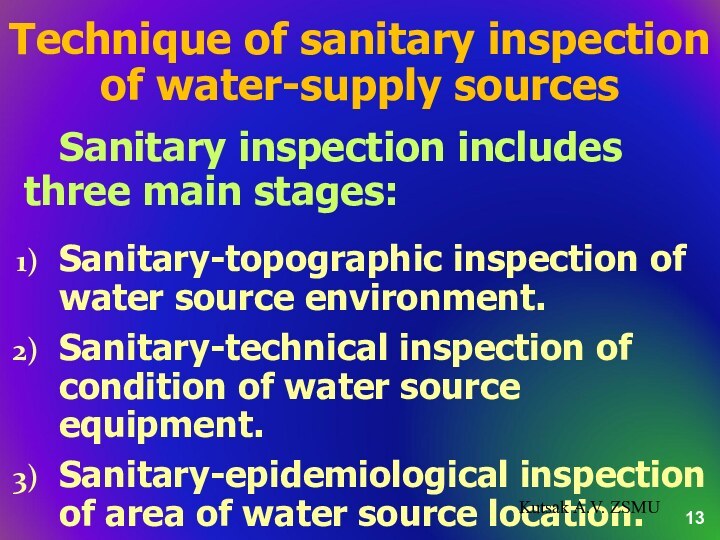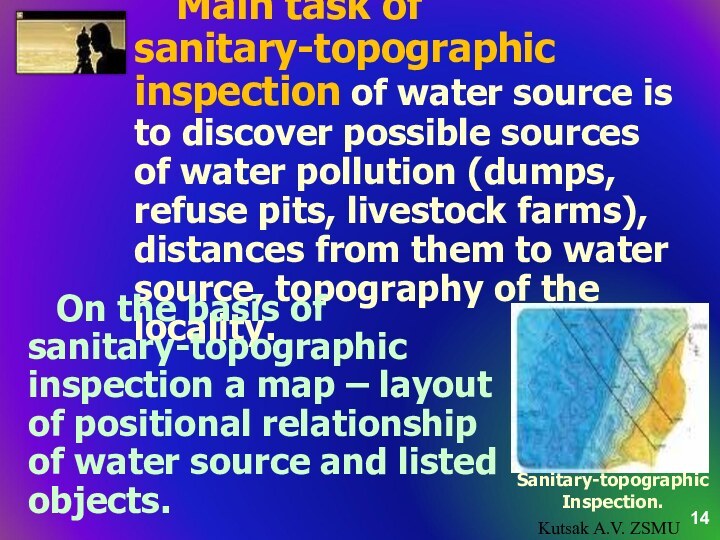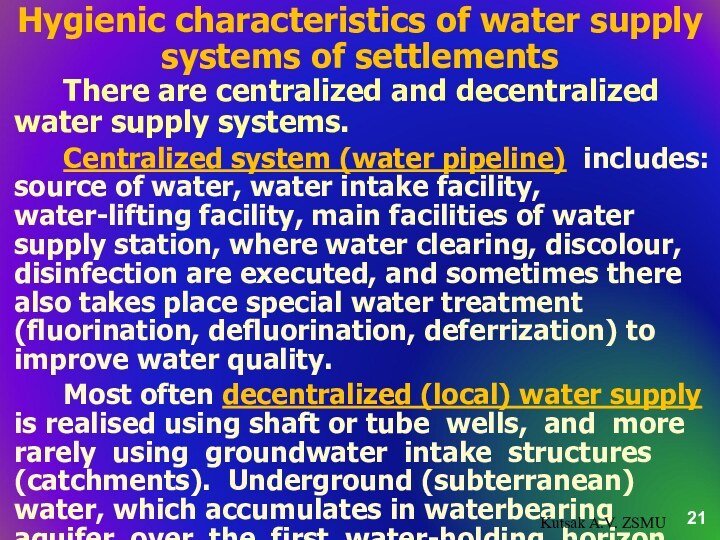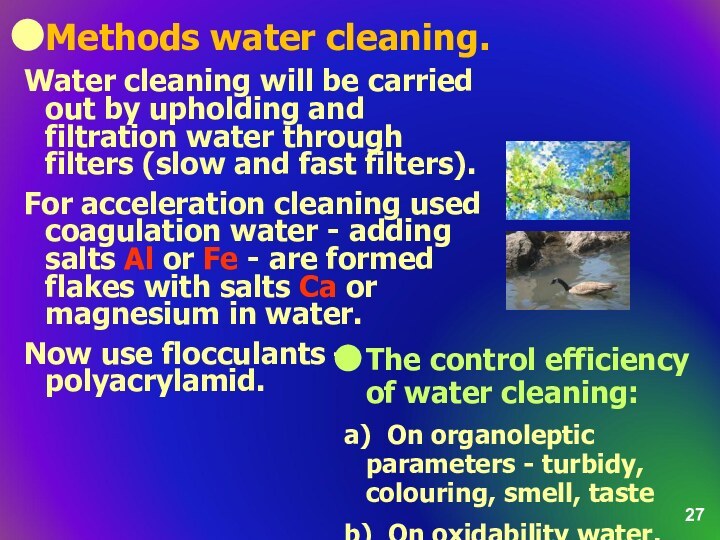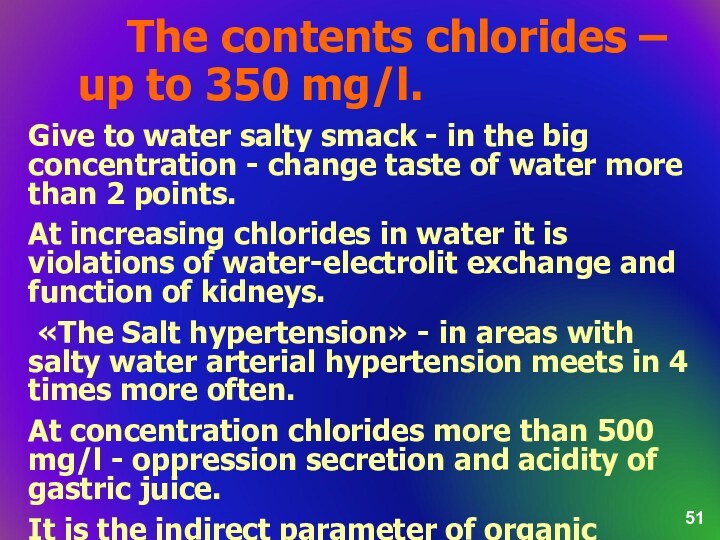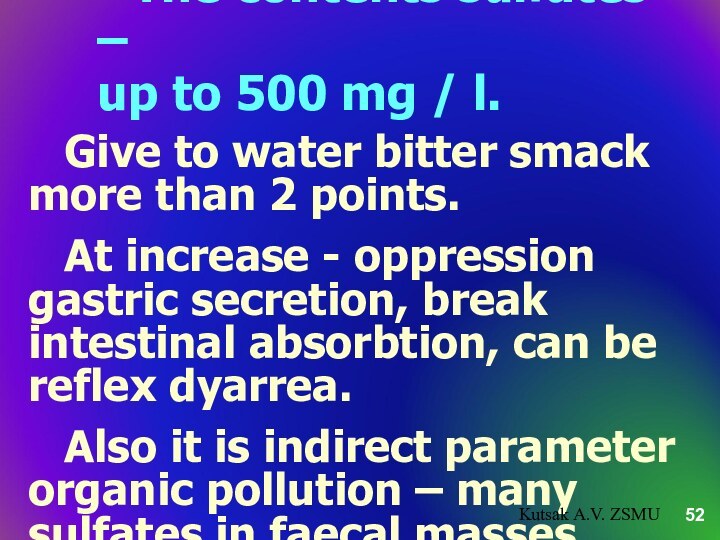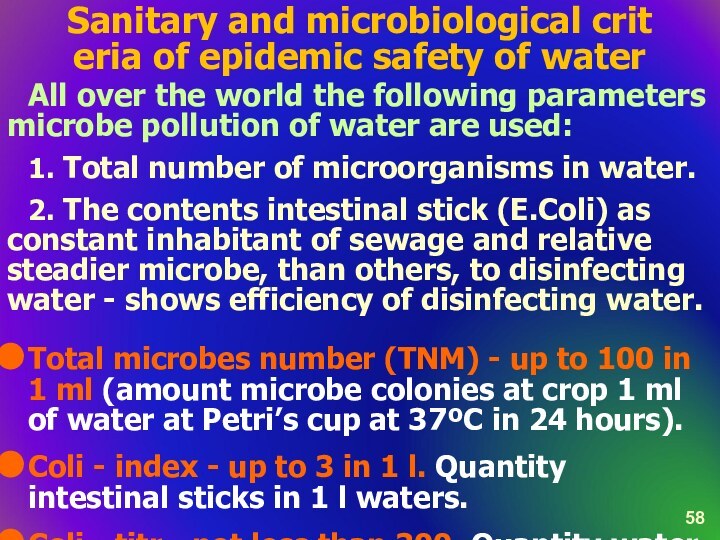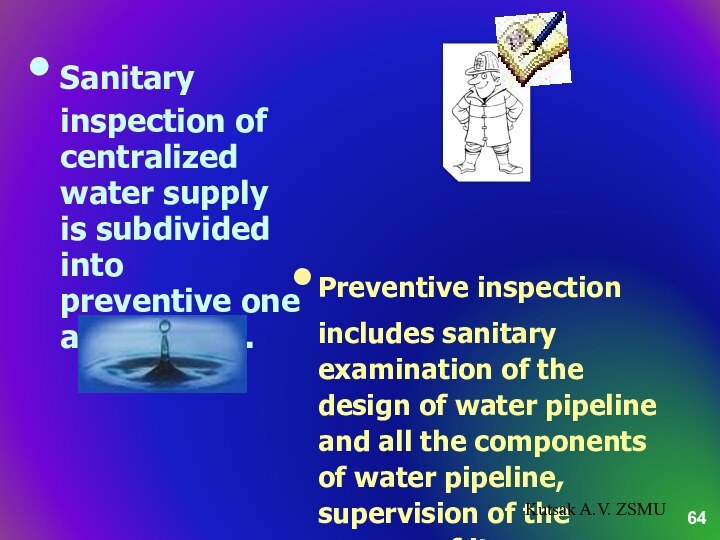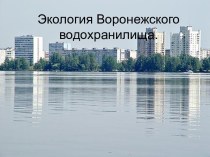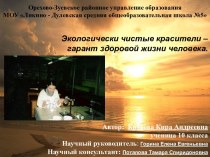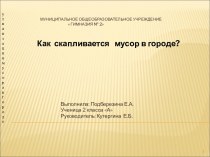balance.
Participation in heat exchange and thermoregulation.
Transportation function –
delivery of nutrients to cells with blood and
lymph, removal of waste products from
the organism with urine and sweat.
As a component of dietary intake and
a source of macro- and microelements supply to organism.
Hygienic significance of water
Water physiological functions:
Flexibility – about 65 % of body mass of adult person consists of water.
70 % of water is the intracellular water,
30 % - extracellular water (in blood),
(7%) - lymph and 23 % - intertissue fluid.
Participation in metabolism and interchange of energy.
Kutsak A.V. ZSMU


